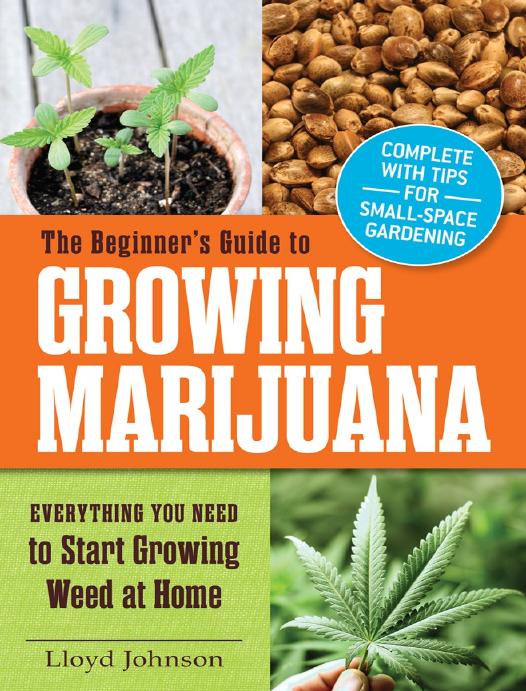The Beginner's Guide to Growing Marijuana by Lloyd Johnson

Author:Lloyd Johnson [Johnson, Lloyd]
Language: eng
Format: epub, azw3, mobi, pdf
ISBN: 978-1-4405-7330-9
Publisher: F+W Media
Published: 2014-03-24T16:00:00+00:00
Transplanting on Schedule
The plants you are starting with will initially determine your transplanting schedule. Some propagators provide what is essentially a largish plant, two to three feet in height. Some provide a rooted clone, a tiny thing a few inches in size. You may be starting seedlings or rooting cuttings of your own.
If you are starting with a well-grown young female plant a few feet in height, transplant it at once into its largest, final container. It might as well get right to work at turning expensive soil and light into strong roots and healthy, vegetative growth. Indoor plants rarely grow their central taproot very long or large; they instead rely on a healthy fine mass of almost hairlike side roots to pull in water and nutrients. A ground-planted cannabis plant can grow its central taproot as long as six feet, so this is a good example of how adaptable cannabis can be.
If you have a healthy clone with strong roots well started, again, go ahead and plant it in the final container for the same reasons as above; it will only go through any possible transplant shock one time and should surge along nicely.
You should plan on two to four weeks for cuttings to root and become actual little plant clones. Until then, keep their light relatively cool; fluorescent light is suitable. They need warmth, but not hot, bright light just yet.
If you have started from seed, and are not using feminized seed, you will be dealing with twice the amount of little plants than you want to end up with in your flowering phase. This is because cannabis is dioecious, and must declare for the grower to know if the plant is male or female.
The first transplant for seedlings is usually from their little four-inch starter pots to a three- or five-gallon container. This will allow enough room for the plants to grow while they make their sexual determination. Unsexed seedlings can also be each allotted a two-gallon pot until they declare their sexual identities; this will not hurt them, though it may limit their final size. This is not necessarily a bad thing in an enclosed and finite space, and it has the added benefit of making it easier to move the males once you know which ones they are.
Download
The Beginner's Guide to Growing Marijuana by Lloyd Johnson.azw3
The Beginner's Guide to Growing Marijuana by Lloyd Johnson.mobi
The Beginner's Guide to Growing Marijuana by Lloyd Johnson.pdf
This site does not store any files on its server. We only index and link to content provided by other sites. Please contact the content providers to delete copyright contents if any and email us, we'll remove relevant links or contents immediately.
Turbulence by E. J. Noyes(7936)
The Thirst by Nesbo Jo(6826)
Gerald's Game by Stephen King(4581)
Be in a Treehouse by Pete Nelson(3945)
Marijuana Grower's Handbook by Ed Rosenthal(3622)
The Sprouting Book by Ann Wigmore(3543)
The Red Files by Lee Winter(3368)
The Remains of the Day by Kazuo Ishiguro(3293)
Sharp Objects: A Novel by Gillian Flynn(2956)
Christian (The Protectors Book 1) by L. Ann Marie(2654)
Organic Mushroom Farming and Mycoremediation by Tradd Cotter(2626)
The Culinary Herbal by Susan Belsinger(2430)
Stone Building by Kevin Gardner(2349)
The Starter Garden Handbook by Alice Mary Alvrez(2282)
Lilac Girls by Martha Hall Kelly(2258)
The Unlikely Pilgrimage of Harold Fry by Rachel Joyce(2218)
The Lean Farm Guide to Growing Vegetables: More In-Depth Lean Techniques for Efficient Organic Production by Ben Hartman(2096)
Urban Farming by Thomas Fox(2061)
Backyard Woodland by Josh VanBrakle(1895)
